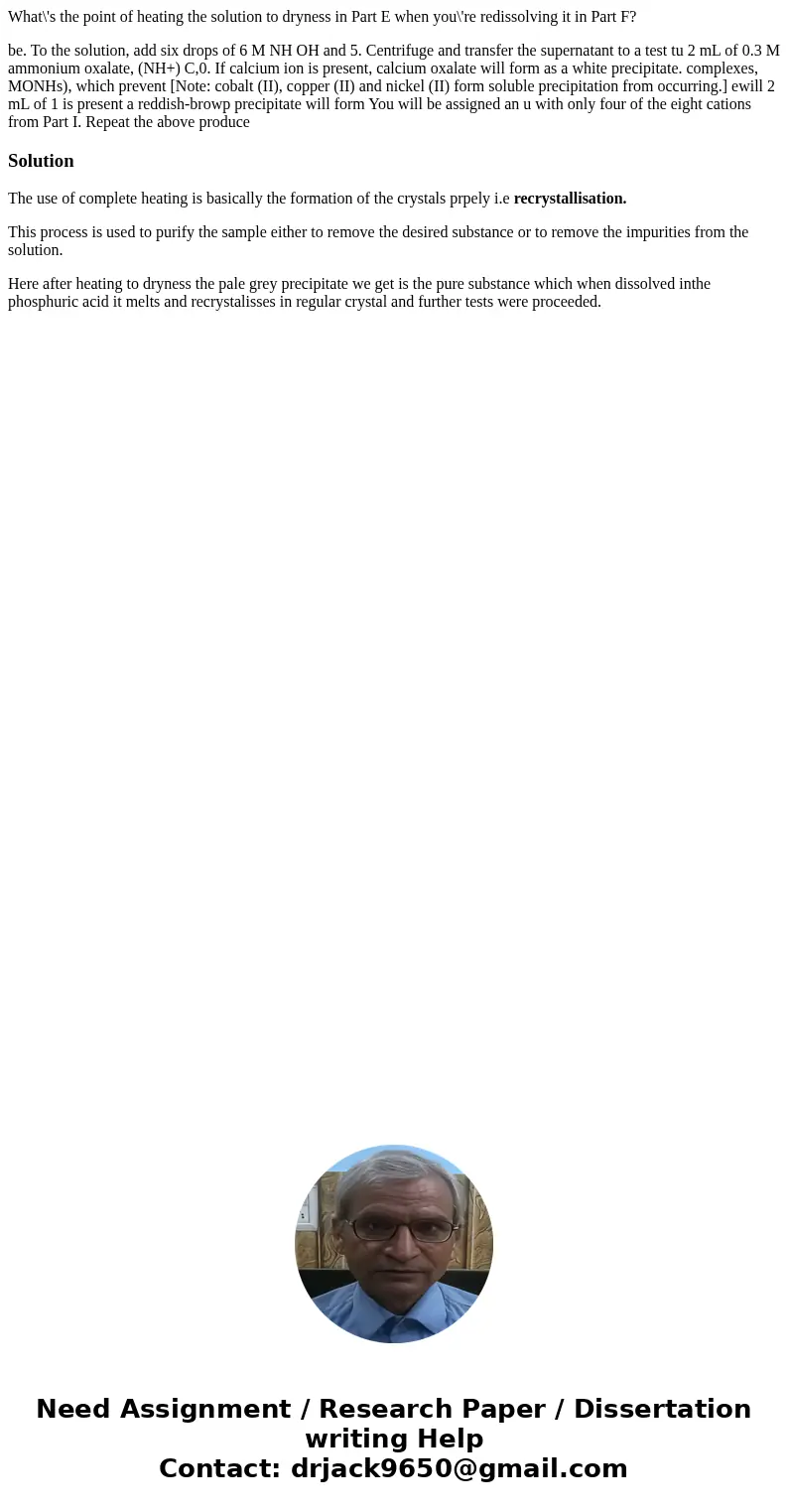Whats the point of heating the solution to dryness in Part E
What\'s the point of heating the solution to dryness in Part E when you\'re redissolving it in Part F?
be. To the solution, add six drops of 6 M NH OH and 5. Centrifuge and transfer the supernatant to a test tu 2 mL of 0.3 M ammonium oxalate, (NH+) C,0. If calcium ion is present, calcium oxalate will form as a white precipitate. complexes, MONHs), which prevent [Note: cobalt (II), copper (II) and nickel (II) form soluble precipitation from occurring.] ewill 2 mL of 1 is present a reddish-browp precipitate will form You will be assigned an u with only four of the eight cations from Part I. Repeat the above produceSolution
The use of complete heating is basically the formation of the crystals prpely i.e recrystallisation.
This process is used to purify the sample either to remove the desired substance or to remove the impurities from the solution.
Here after heating to dryness the pale grey precipitate we get is the pure substance which when dissolved inthe phosphuric acid it melts and recrystalisses in regular crystal and further tests were proceeded.

 Homework Sourse
Homework Sourse